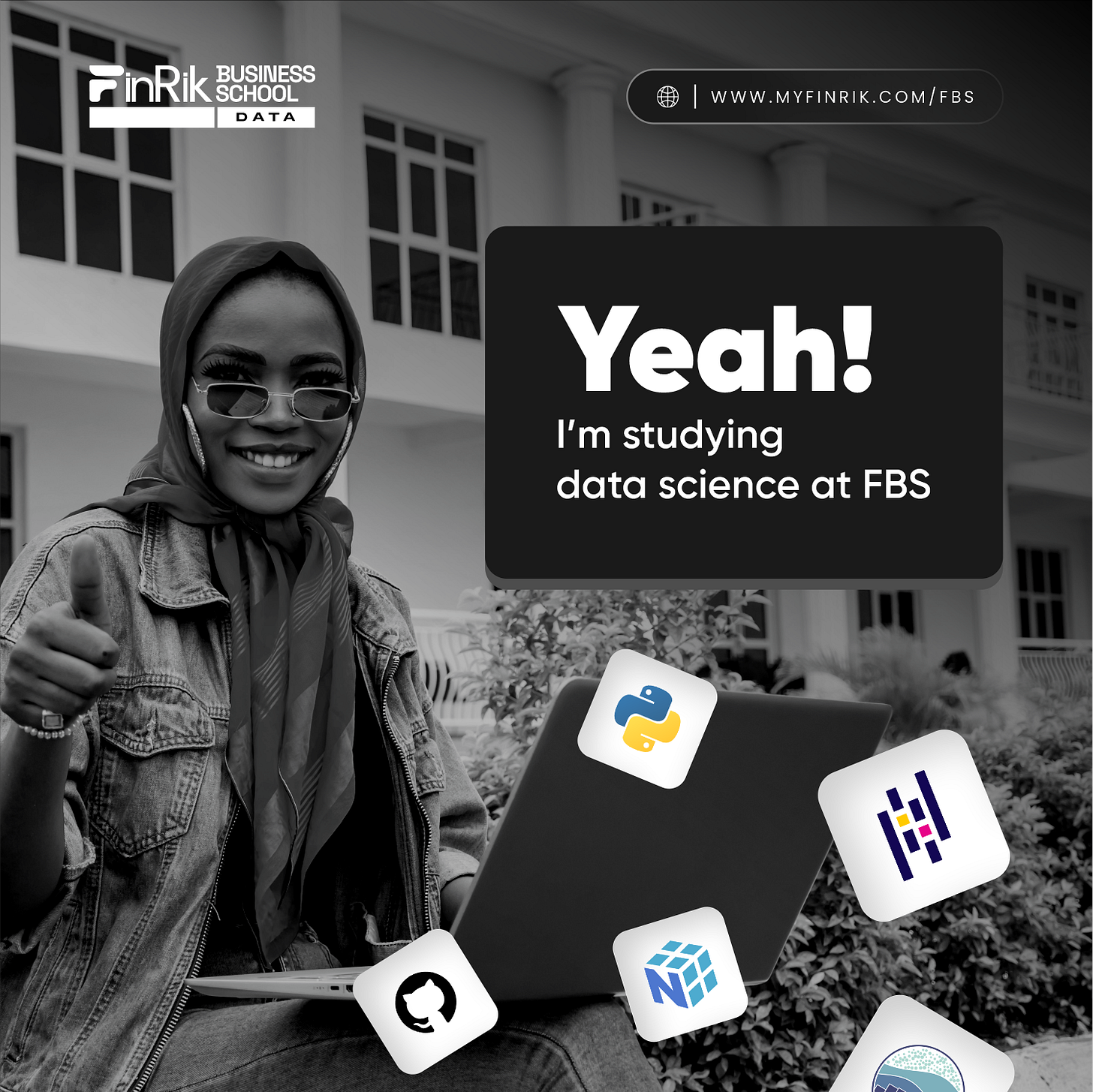Data Science Made Simple: Your Beginner’s Guide to Turning Data into Insight
Presented by FinRik Business School | Our 8-week Data Cohort begins May 15
Data is powering everything around us from the way we shop to how we stay healthy. But behind the scenes? It’s data science doing the heavy lifting.
In this edition, we break down what data science is, why it matters, and how you can start your journey with no fluff, no jargon. Just clarity.
What Is Data Science, Really?
Data science is how we turn information into insight. It combines programming, statistics, and problem-solving to help us understand the past and predict the future.
Companies use it to make better decisions, reduce waste, detect fraud, and serve customers better. In short: it’s a superpower in the digital age.
Why You Should Care
Whether you’re in finance, logistics, healthcare, or marketing — data science is reshaping your industry. It helps:
Forecast trends
Automate tasks
Solve real-world problems
Drive smarter strategies
It’s not just about data — it’s about decisions.
A Day in the Life: How Data Science Works
Here’s a simple version of the data science process:
Define a problem – What are we trying to solve?
Collect the data – From spreadsheets, APIs, or databases
Clean the data – Fix errors, fill gaps, standardize values
Explore the data – Use charts and statistics to find patterns
Model the data – Use algorithms to make predictions
Test the model – See how well it works
Deploy the solution – Put it into action
Communicate insights – Tell the story with visuals and clarity
The Tools You’ll Use
To work in data science, you’ll likely use:
Python (with pandas, scikit-learn, matplotlib)
SQL (to access and filter databases)
Jupyter Notebooks (for sharing your work)
Git (for version control and collaboration)
Key Concepts Made Simple
You don’t need to be a math wizard to get started. Focus on:
Averages and Variance – Understand how your data behaves
Distributions – Identify patterns and outliers
Correlation vs. Causation – Just because it’s linked doesn’t mean it’s the cause
Hypothesis Testing – Can you trust your results?
Machine Learning 101
Once you understand your data, machine learning helps you predict or classify things.
Supervised Learning: You have labeled data (e.g., predicting house prices)
Unsupervised Learning: You don’t (e.g., grouping customers by behavior)
Popular algorithms:
Linear & logistic regression
Decision trees
K-means clustering
Neural networks
A Simple Project to Try
Want to put your knowledge to the test?
Predict House Prices
Download a dataset from Kaggle
Clean and explore it using Python
Build a regression model
See how well it predicts prices
Share your findings with visuals!
Ethics & Responsibility Matter Too
Great data scientists aren’t just technical — they’re thoughtful. You must:
Respect privacy
Reduce bias in algorithms
Make your models transparent and fair
Remember: With data comes responsibility.
Ready to Dive In? Join Our Data Cohort
FinRik Business School’s 8-week Data Science Cohort starts May 15.
You’ll learn:
Python fundamentals
How to clean and visualize real-world data
Machine learning basics
How to build and present real projects
It’s beginner-friendly, practical, and guided by experts.
Enroll now and start mastering one of the most valuable skills of the 21st century.
→ Apply to Join the May 15 Data Cohort (Join Us)
Groth Newsletter, powered by FBS





